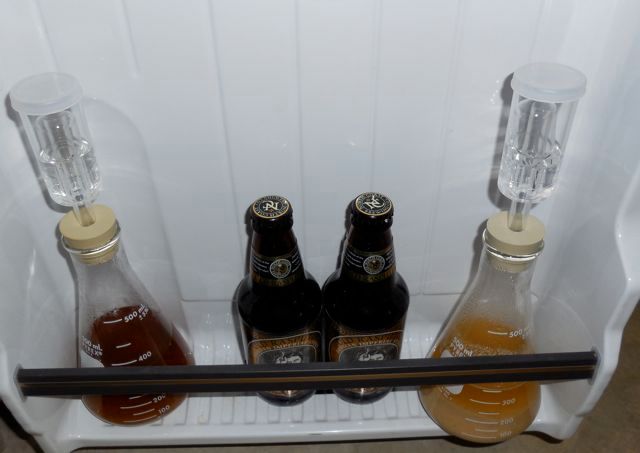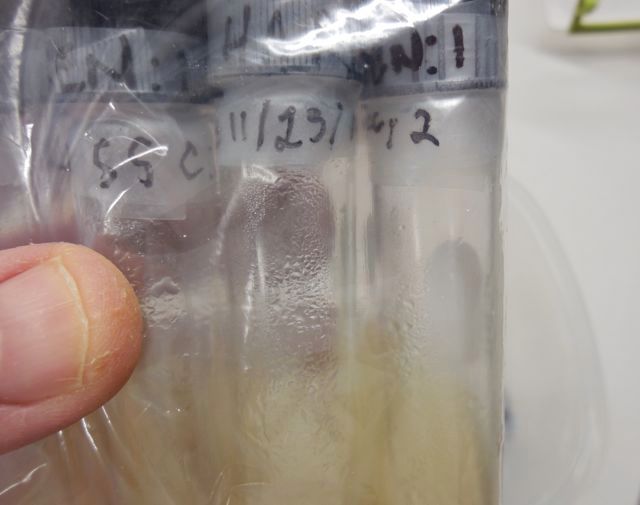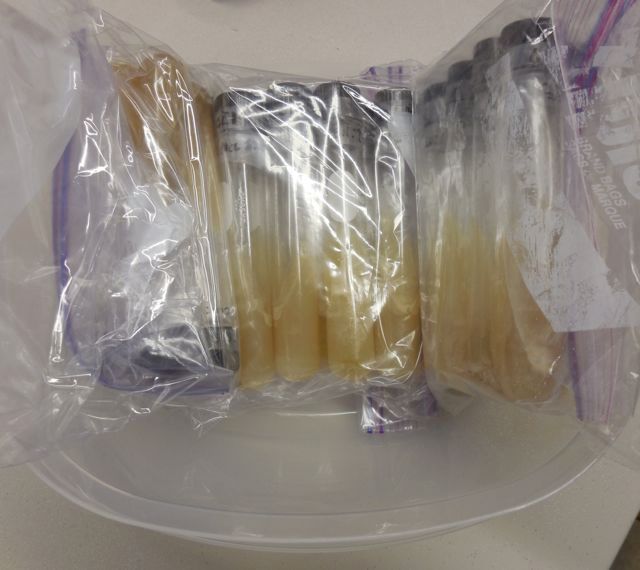
MJ West Coast from my galaxy pale ale in the FV, in water for later, same in a DME wort as a starter, and a slug of the dregs of a Shepherd Neame 1689 in the same wort.


Hi daf - he has actually...... under beer rather than water. For bottom cropping it is better to leave a little beer in the fermenter after racking off, swill this around to loosen the yeast and collect the slurry with a little beer. For top cropping collect a little green beer at the same time and put the cropped yeast into this.daf wrote:Well I read it in the most recent edition.
Your posts are great, mate. But can you actually give me an answer as to how yeast can be stored?


